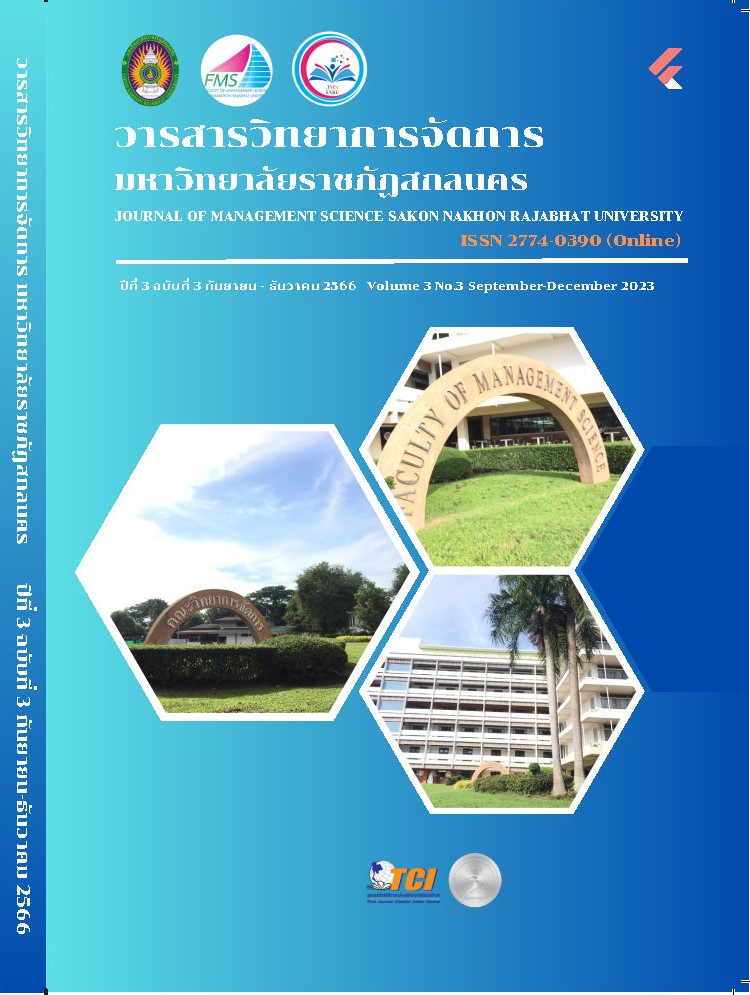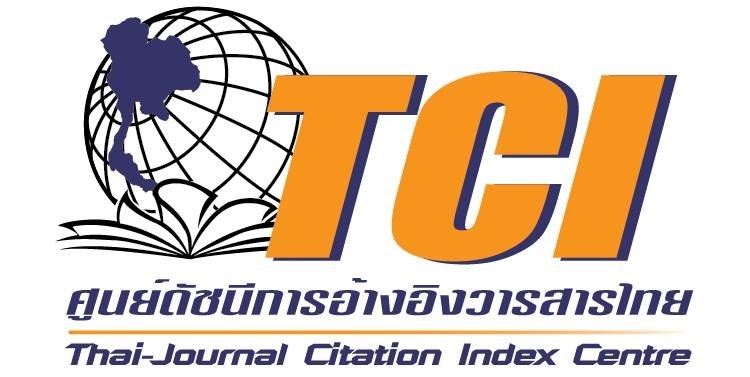THE IMPACT OF AUGMENTED REALITY (AR) ADVERTISING ON CONSUMER BEHAVIOR: A COMPARATIVE STUDY OF TRADITIONAL AND IMMERSIVE MARKETING APPROACHES
คำสำคัญ:
Augmented reality (AR) advertising;, Consumer behavior;, Traditional advertisingบทคัดย่อ
This academic article investigates the transformative potential and impact of Augmented Reality (AR) advertising compared to traditional marketing methods. Despite AR's rising prominence in the marketing domain, empirical studies directly comparing its effectiveness with conventional techniques remain limited. This study, therefore, fills this gap by providing a comprehensive comparative analysis, examining various aspects of consumer behavior, including purchase intention, brand attitude, and information recall. The academic article further explores the role of personalization in AR advertising and its influence on consumer satisfaction and overall shopping experience. The findings demonstrate AR's significant advantage over traditional marketing, offering immersive, interactive, and personalized experiences that greatly enhance consumer engagement, brand loyalty, and recall. However, potential challenges, specifically information overload leading to cognitive strain on consumers, are also identified. The study concludes by emphasizing the importance of achieving a balance to maximize AR's potential while mitigating its potential downsides. These findings provide invaluable insights for marketers and businesses looking to integrate AR into their advertising strategies.
เอกสารอ้างอิง
Bonetti, F., Warnaby, G., & Quinn, L. (2018). Augmented reality and virtual reality in physical and online retailing: A review, synthesis and research agenda. In Augmented Reality and Virtual Reality (pp. 119-132). Springer, Cham.
Bulearca, M., & Tamarjan, D. (2010). Augmented reality: A sustainable marketing tool?. Global Business and Management Research, 2(2&3), 237-252.
Carmigniani, J., Furht, B., Anisetti, M., Ceravolo, P., Damiani, E., & Ivkovic, M. (2011). Augmented reality technologies, systems and applications. Multimedia Tools and Applications, 51(1), 341-377.
Chaffey, D., & Ellis-Chadwick, F. (2019). Digital Marketing (7th ed.). Pearson.
Choi, J., Lee, J. J., & Lee, J. H. (2019). The influence of augmented reality shopping experience on brand perception and purchase intention. European Journal of Marketing, 53(5), 921-946.
Chung, N., Han, H., & Joun, Y. (2015). Tourists' intention to visit a destination: The role of augmented reality (AR) application for a heritage site. Computers in Human Behavior, 50, 588-599.
Craig, D. (2021). Understanding Augmented Reality: Concepts and Applications. Elsevier.
Dieck, M. C., Jung, T., & Dieck, D. (2021). Enhancing brand experiences through augmented reality. Journal of Retailing and Consumer Services, 58, 102337.
Dwivedi, A., Johnson, L. W., McDonald, R. E., & Su, B. C. (2023). Exploring the role of augmented reality in interactive advertising: A research agenda. Journal of Interactive Marketing, 51, 34-49.
Ferreira, A., Rosa, A. F., & de Oliveira, R. C. (2019). Augmented Reality in Retail: A Trade Literature Review. Journal of Retailing and Consumer Services, 50, 287-295.
Hilken, T., Heller, J., Chylinski, M., & Keeling, D. I. (2021). Seeing the future: How AR transforms the consumption experience, customer satisfaction, and willingness to buy. Journal of Business Research, 126, 679-690.
Hwang, J., & Park, M. (2018). The effects of the use of AR in online retail: The role of product uncertainty. Journal of Interactive Marketing, 43, 161-173.
Javornik, A. (2016). Augmented reality: Research agenda for studying the impact of its media characteristics on consumer behavior. Journal of Retailing and Consumer Services, 30, 252-261.
Jung, T., Chung, N., & Leue, M. C. (2015). The Determinants of Recommendations to Use Augmented Reality Technologies: The Case of a Korean Theme Park. Tourism Management, 49, 75-86.
Kaplan, A. M., & Haenlein, M. (2010). Users of the world, unite! The challenges and opportunities of social media. Business Horizons, 53(1), 59-68.
Kim, J., & Johnson, K. K. (2022). Augmented reality: The effect of visual cues on fashion product interest. Journal of Retailing and Consumer Services, 59, 102357.
Kim, Y. J., & Sundar, S. S. (2014). Does Screen Size Matter for Smartphones? Utilitarian and Hedonic Effects of Screen Size on Smartphone Adoption. Cyberpsychology, Behavior, and Social Networking, 17(7), 466-473.
Lee, N., & Lee, H. (2023). Augmented reality advertising: A new digital marketing era. Computers in Human Behavior, 105, 106226.
Liao, S., Liu, Y., & Pi, S. (2021). The impact of augmented reality on marketing experiences: The case of online shopping. Technological Forecasting and Social Change, 158, 120202.
Lim, Y. J., Kim, H., & Chen, J. (2018). Eliciting positive user experience in interactive product design: a case study of mobile device. International Journal of Design, 12(2), 99-113.
Milgram, P., Takemura, H., Utsumi, A., & Kishino, F. (1994). Augmented reality: A class of displays on the reality-virtuality continuum. Proceedings of Telemanipulator and Telepresence Technologies, 2351, 282-292.
Nguyen, T. T., Hui, P. M., Harper, F. M., Terveen, L., & Konstan, J. A. (2014). Exploring the filter bubble: the effect of using recommender systems on content diversity. In Proceedings of the 23rd international conference on World Wide Web (pp. 677-686). ACM.
Olsson, T., Lagerstam, E., Kärkkäinen, T., & Väänänen-Vainio-Mattila, K. (2013). Expected User Experience of Augmented Reality Services: A User Study. In Proceedings of the SIGCHI Conference on Human Factors in Computing Systems (pp. 169-178).
Pantano, E., & Servidio, R. (2012). Modeling innovative points of sales through virtual and immersive technologies. Journal of Retailing and Consumer Services, 19(3), 279-286.
Park, E., & Kim, K. J. (2018). An integrated adoption model of mobile cloud services: exploration of key determinants and extension of technology acceptance model. Telematics and Informatics, 35(1), 665-688.
Pi, S., Liao, S., & Liu, Y. (2021). The Effect of Augmented Reality on E-commerce: From the Perspective of Consumer Experience. Information Systems Frontiers, 23(3), 653-670.
Poushneh, A., & Vasquez-Parraga, A. Z. (2021). Discernible impact of augmented reality on retail customer's experience, satisfaction and willingness to buy. Journal of Retailing and Consumer Services, 48, 278-286.
Rese, A., Baier, D., Geyer-Schulz, A., & Schreiber, S. (2017). How augmented reality apps are accepted by consumers: A comparative analysis using scales for perceived interactivity, perceived usefulness, and attitude. Journal of Business Research, 84, 193-211.
Shelton, A. L. (2023). The potential of AR in omni-channel retail. International Journal of Retail & Distribution Management, 51(2), 123-139.
Smith, A. (2022). The Future of AR in Digital Marketing: Opportunities and Challenges. Journal of Digital & Social Media Marketing, 10(1), 77-89.
Soliman, W., & Tu, P. (2021). Understanding the impact of augmented reality on consumer experiences in online fashion retail: An environmental psychology perspective. Journal of Business Research, 129, 528-540.
Spence, J., & Liu, R. (2019). A temporary matter: When will it be safe to view this paper?. In 16th Eurographics Conference on Rendering Techniques (pp. 127-138).
Tom Dieck, M. C., & Jung, T. (2018). A theoretical model of mobile augmented reality acceptance in urban heritage tourism. Current Issues in Tourism, 21(2), 154-174.
Van Krevelen, D. W., & Poelman, R. (2010). A survey of augmented reality technologies, applications and limitations. International Journal of Virtual Reality, 9(2), 1-20.
Velev, D., & Zlateva, P. (2012). Use of augmented reality in advertising. Procedia Technology, 5, 682-687.
Wang, X., Kim, S., & Lee, Y. (2013). Increasing interactivity in blended courses through a cutting-edge mobile application. Computers & Education, 68, 308-319.
Yim, M. Y., Chu, S. C., & Sauer, P. L. (2017). Is augmented reality technology an answer for the decline in banner advertisement efficiency?. Journal of Interactive Marketing, 39, 89-103.
Yoo, C. W., Sanders, G. L., & Moon, J. (2013). Exploring the effect of e-WOM participation on e-Loyalty in e-commerce. Decision Support Systems, 55(3), 669-678.
ดาวน์โหลด
เผยแพร่แล้ว
รูปแบบการอ้างอิง
ฉบับ
ประเภทบทความ
สัญญาอนุญาต
ลิขสิทธิ์ (c) 2023 วารสารวิทยาการจัดการ มหาวิทยาลัยราชภัฏสกลนคร

อนุญาตภายใต้เงื่อนไข Creative Commons Attribution-NonCommercial-ShareAlike 4.0 International License.
บทความที่ตีพิมพ์ในวารสารวิทยาการจัดการ มหาวิทยาลัยราชภัฏสกลนคร เป็นทัศนะ ลิขสิทธิ์ และความรับผิดชอบของผู้เขียนเจ้าของผลงาน






